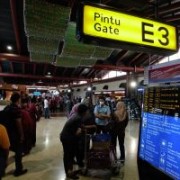
About Reetu Verma
Reetu Verma is a senior lecturer in the School of Economics and sub-dean at the University of Wollongong, Australia. Her research interests are economic modeling, applied econometrics, economic growth and development in Asia. Her research has concentrated on gender differences in the workplace, sustainability of trade deficit in the South Asian countries and international migration, wage inequality and labor mobility.Migration matters: the race to ensure a future supply of workers in Asia

While there has been strong promotion of free global trade in goods and services as well as in capital inputs, the case has not been made so forcefully for increasing the international mobility of the other factor of production, labor. A recent article in The Economist, Free Exchange—Border Follies, surveys the latest research on the potential benefits of increasing international labor migration (The Economist 17 November 2012). The estimates are staggering, with possible increases in world output and income ranging from 30% to 100% (amounting to an additional $20 trillion to $70 trillion) depending on the level of migration assumed. These calculations swamp the potential benefits of increasing international trade, which is estimated to be less than 3% of global output. The research shows that the gains come from migration-induced productivity increases in the host country and the additional incomes are more than sufficient to compensate for any adverse effects, for example, if wages for some host country workers fall in the short term. Remittances (worth around $300 billion a year) are also sent to the migrant source countries to compensate those who stay behind.


Search
Subscribe / Connect to Asia Pathways
Subjects
- Accelerating Progress in Gender Equality
- Addressing Remaining Poverty and Reducing Inequality
- Agriculture and natural resources
- Capacity development
- Climate change
- Economics
- Education
- Energy
- Environment
- Finance and Innovation
- Finance sector development
- Gender
- Globalization and Economic Stability
- Governance and public sector management
- Health
- Industry and trade
- Information and Communications Technology
- Infrastructure
- Making Cities More Livable
- Miscellaneous
- Population
- Poverty
- Private sector development
- Regional cooperation and integration
- Sanitation
- Social development and protection
- Strengthening Governance and Institutional Capacity
- Subjects
- Transport
- Uncategorized
- Urban development
- Video Blog
- Water
Recent Posts
- From Crisis to Resilience: The Evolution of the Banking Sector in Asia and the Pacific
- Tariffs on the Table: What Could Be Asia’s Next Move?
- Investing in Childcare a Win for Women and the Economy
- Flush and Flourish: Upgraded Toilets Can Transform Lives in Rural Asia
- New Ways for Climate Finance and Development in Asia and the Pacific




Recent Comments